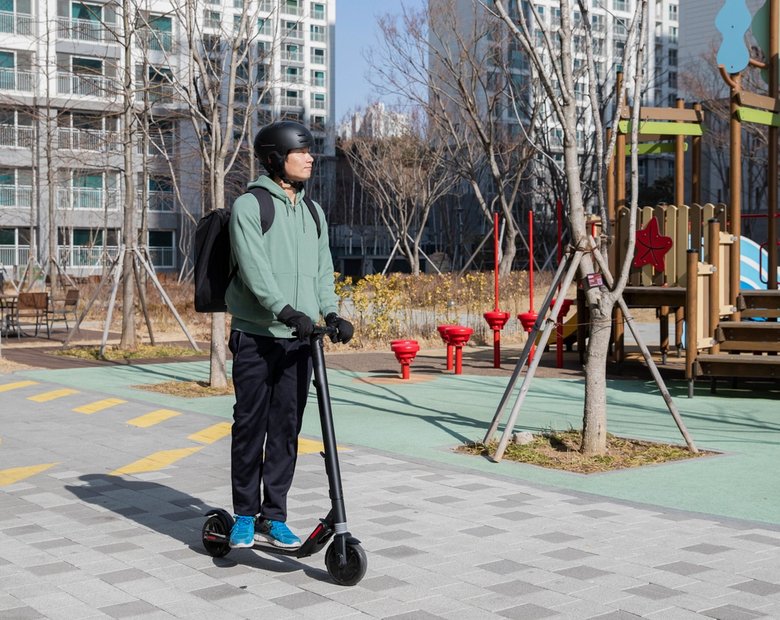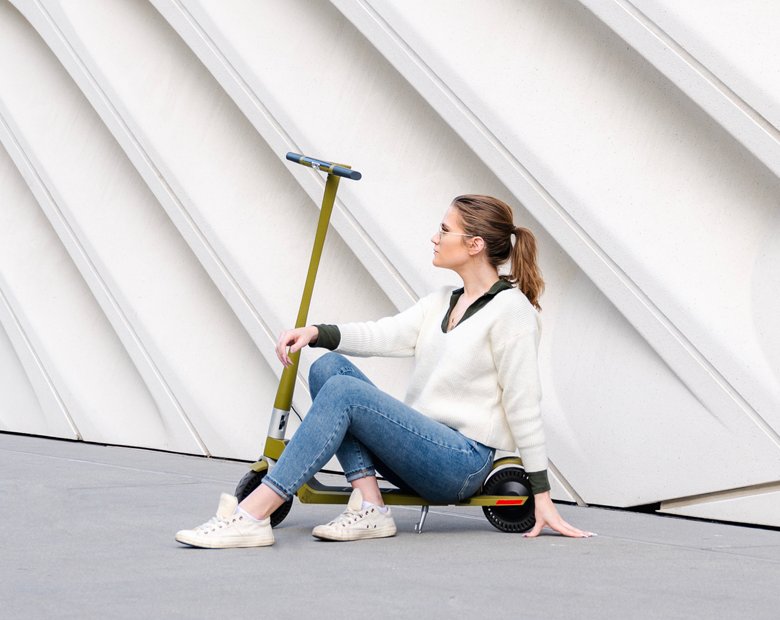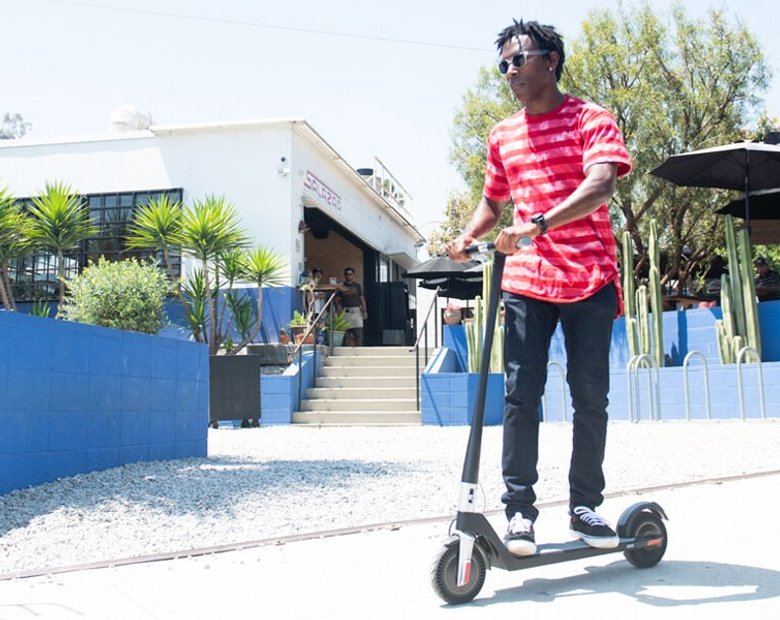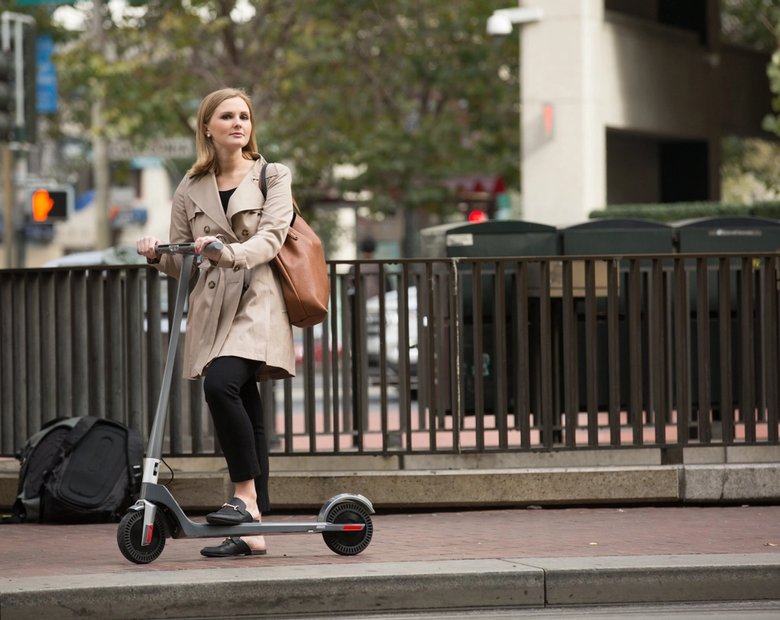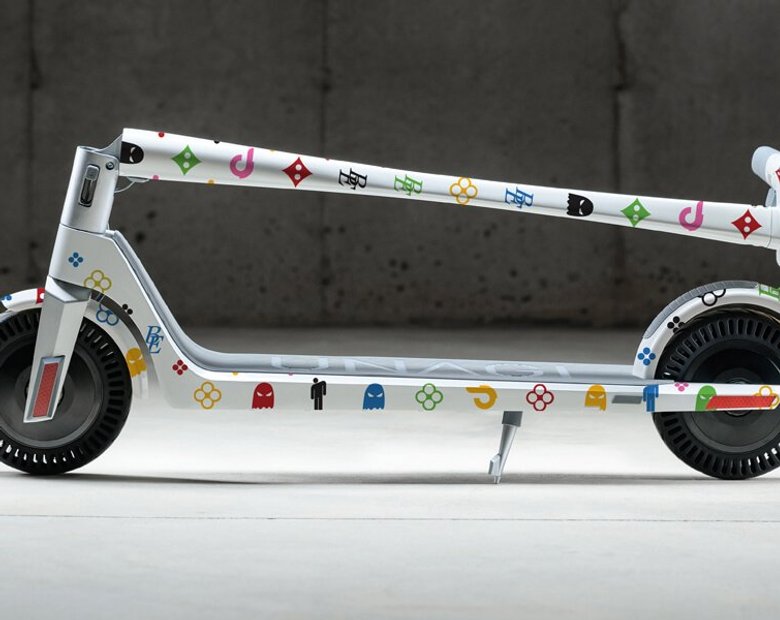When choosing your first electric scooter, it’s easy to get bewildered by electrical ratings. Volts? Watts? Brushless DC Motors? You just want a fast, affordable scooter that can climb hills!
But you can learn to decipher the rated specs of any electric vehicle's motor power. In fact, it's the superpower you need to find an electric scooter best suited to your riding needs and preferences.
Need one motor or two? What is peak power, and why does it matter? Do all electric scooters have brushless DC hub motors?
We’ll answer these questions and many more in our beginner’s guide to electric scooter motors below.
Electric Scooter Motors: the Basics
Brushless DC Hub Motor (BLDC Motor)
Most every scooter – the overwhelming majority of electric scooters, that is – uses some kind of BLDC hub motor, which means that the motor lives inside one or both of the scooter’s wheels. A hub-mounted electric motor is a part we hardly ever notice, but without it, the most powerful scooters on the road wouldn't be going anywhere.
BLDC motors have almost fully replaced brushed DC motors, an older electric motor technology that uses mechanical brushes to move electrical current. Brushed motors are far less efficient than Brushless motors and more subject to mechanical failure and overheating.
Since you'll probably never see a Brushed DC motor on an electric scooter, we won't dwell on other differences. It's enough to say that BLDC motors allow for regenerative braking, in which the excess heat generated by electronic braking gets turned into electricity and transferred back to the battery.
Electric motors are primarily rated in Volts and Watts, although a few other numbers can also come into play. Power itself comes from the battery, the electric scooter’s gas tank.
When you turn the throttle, the controller sends the right amount of electrical power to the motor, and the BLDC hub motor turns electricity into physical torque, transmitting it directly to one or both wheels.
Volts
Voltage measures how much current can push through to the motor. A higher voltage motor will generally be more efficient. An electric scooter motor's voltage correlates with the voltage of its controller and battery, and all work together to deliver power most efficiently.
Some of the most common voltages for electric scooters are 24V, 36V, 48V, 52V, 60V, 72V, and even, at the very high end, 84V in hugely powerful scooters like Minimotors Dualtron X Limited. In general, higher voltage electrical systems generate more power for faster acceleration, more torque, and a higher top speed.
Watts
Watts is a measure of power consumption, or the amount of power that a motor can consume. In general, a higher motor watt rating will mean faster acceleration, higher load limit, and higher top speeds.
Motor wattage offers one key indicator to motor performance, but it's not the only one, and two motors rated with the same wattage can perform very differently in the real world in terms of acceleration and hill climbing ability, for example.
Watts tells you how much power an electric motor can take, but not how much power output it can generate in return.

Nominal Power Vs. Peak Power
Nominal Power Consumption
Nominal power, also called continuous power, is the amount of motor power an electric scooter motor can safely consume for an extended period of time without overheating or incurring damage. Like "horsepower," watts is an imprecise measurement, and manufacturers can measure motor wattage differently.
Watts are not a measure of how efficient a motor might be. Two 500W motors, for example, might not have the same mechanical power. This number doesn't tell us much about scooter performance, on its own, and two motors with the same sustained or continuous power consumption might have very different motor performance in the form of output.
Peak Power Consumption
Most quality electric scooters will list their motor power rating in two figures: Nominal (or continuous) power and Peak power.
Peak power consumption refers to the amount of power a motor can consume in shorter bursts of high intensity.
Generally, the higher the rated peak power, the faster an electric scooter will accelerate and climb hills, so it's important to pay attention to this number.
Torque
Torque describes the twisting force produced by a turning motor, and it's the force that turns the wheels and makes the scooter move.
Torque is measured in Newton meters (NM) or foot-pounds. Most electric scooters, however, don't list a motor's torque (though some might describe their vehicles as "torquey").
Watts measures the input capacity of electric motors-- the amount of power they can consume -- while torque describes their output, the actual motor power generated.
Electric scooter manufacturers do not provide this figure, so it's important to read reviews written by people who have ridden an electric scooter you might want to buy to find out how it actually performs on the road.
Speed and Acceleration
When it comes to speed and acceleration, a motor's wattage is not the only factor to consider. The weight of the rider and the terrain can also affect performance.
Additionally, the type of motor an electric scooter can also impact acceleration and top speed. For example, a dual motor scooter will generally have faster acceleration and a higher top speed than a single motor scooter.
As noted, an electric scooter's voltage can also affect speed and acceleration, as can the size of its battery cells and the efficient operation of its motor controller.
Hill Climbing
Higher wattage motors and motors with higher torque are better equipped to handle steep inclines. hill climbing ability is also greatly affected by factors such as rider weight, terrain, and even weather and wind direction.
It's important to consider the climate, the terrain you'll be riding, and the weight of the rider when choosing an electric scooter motor.
If you plan on tackling hills frequently, or riding in adverse conditions, it's best to opt for a scooter with a higher wattage motor, higher peak power rating, and higher torque.
Dual motor power will pretty much always get you over hills faster than single motor power.
Single Motor Electric Scooters
Single motor scooters use one DC electric motor mounted in either the front or rear wheel. While several great budget electric scooter models, like the Gotrax G3 Plus, have front-mounted hub motors, rear-mounted motors are preferable for reasons we'll discuss below.

Front Hub Motors
As the name suggests, front-mounted DC electric motors mount inside the front wheel of an electric scooter. Scooters with front hub motors tend to also have relatively low wattage and rarely rate above 500W for continuous power.

Rear Hub Motors
Electric scooters with rear hub motors, like the EMOVE Cruiser, tend to have better traction on wet or slippery roads, and they also tend to have better hill climbing ability than scooters with front hub motors.
This is because front hub motors tend to do more pulling than pushing, with the weight of the scooter and rider creating unwanted drag.
Since riders mostly plant their weight over the rear wheel, especially when stopping or climbing hills, a rear wheel drive scooter will tend to have more stability and be less prone to spinning out in wet conditions.
Dual Motor Electric Scooters
You've got to have at least one motor to power your scooter, but why not one in each wheel? Dual hub motors give an electric scooter twice the power for exceptional climbing and faster acceleration.
Most dual hub motor electric scooters cost well over $1000 and weigh over 50 pounds, with one very rare exception, the Unagi Model One Classic and Model One Voyager, both of which have dual 250W motors but weight under 30 pounds.
Dual motor scooters typically require more battery capacity. The Model One Voyager's energy dense battery cells give it about twice the miles of its predecessor, for dual motor power and up to 25 miles of range.

Why Switchable Dual Motors Are Better than Non-Switchable
As we've noted, rear wheel scooters perform better in wet conditions, even better than dual motors unless you have traction control. For that reason, it's better to switch off dual motors and use only the rear motor if you happen to find yourself riding in the rain.
Most dual motor scooters will consume less power and get longer range in single motor mode. Surprisingly, the Unagi Voyager's motors are so efficient that it gets better range with both motors switched on.
Most Common Motor Power Ratings

Entry-Level and Commuter Scooters: 350-700W
Entry-level and commuter electric scooters, designed for short commutes or leisurely rides around town, often have motors in the 350-700W range.
These scooters are great for those on a budget or those who don't need a lot of power for their daily rides, but that doesn’t mean they can’t be plenty powerful.
High quality electric scooters with motors rated between 350-500W can typically reach speeds of 18-20mph, accelerate quickly, and climb relative steep inclines with ease.
Intermediate and Long-Range Commuters: 700W-1000W
Scooters with motor power ratings between 700W and 1000W are typically intermediate vehicles with fast acceleration, high speeds over 20 mph, and longer ranges than entry level or basic commuter scooters.
Whether single or dual motor, these scooters have more power on hand for climbing hills and can typically handle a higher weight limit and coast over rougher terrain.
Premium and Performance Scooters: 1000W-3000W+
Electric scooters with motors rated at over 1000W are typically dual motor performance scooters with very high top speeds (40-50mph), race-worthy acceleration, and off-road abilities.
Examples in this category include huge dual hub motor scooters like the NAMI BURN-E 2 and Kaabo Wolf King GT, both of which boast over 2000W of power from their combined front and rear motors.
Scooters with this kind of power come with price tags to match and will typically cost somewhere in the $2000-$4000 range.

How Much Motor Power Do You Need?
Let's review: while a motor's power consumption rating, expressed in watts, gives us some idea of its overall output power, two motors with the same wattage can perform very differently. It's a motor's efficiency that makes the difference.
Motors with higher voltage tend to be more efficient and have higher torque for more power over hills and faster acceleration.
The amount of power you need to power your electric scooter, however, will depend entirely on the main reason you're riding that scooter. If you're cruising around town, running errands, and commuting a few miles each way, then a single 500W motor can be more than enough. Some scooters with 350W motors perform just as well or better than many rated at 500W.
Few, if any, single motor 500W scooters will perform as well as the Unagi Voyager. With its dual, switchable 250W motors, 36V system, and energy dense 21700 Lithium ion battery cells, the Voyager combines is the ultimate in compact, portable, electric motor power.












